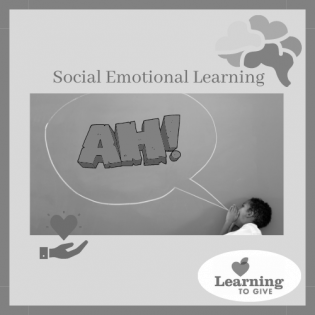Everyday SEL - The Shout
Keywords:
Feelings
Self-Management
Social-Emotional Learning
"The Shout" is an Everyday SEL practice for encouraging young people to express their authentic emotions and use their emotions to create change. Some traditional SEL activities attempt to stifle problematic emotions like anger. In her article, "When SEL is Used as Another Form of Policing," Cierra Kaler-Jones argues that “Righteous anger has long been used as a tool to fuel movements that have and continue to propel our nation forward towards justice. To tell students to not harness their anger is to tell them their rage isn’t warranted.” This activity asks young people to channel their emotions while using their voices to express their anger, sadness, and fear. According to researchers, anger can be used to create change when it is channeled effectively.
SEL Connection:
- Self-Management: regulate one's emotions using stress management
Warm-Up
- Display the "It's Okay to Feel" image (see handout below).
- Discuss what this means to them.
- Read the book Ruby Finds a Worry, and use this Learning to Give literature guide to discuss it.
Activity Instructions
- On a piece of paper, write down something that makes you:
- angry
- sad
- scared
- worried
- Ball it up.
- Hold it out in front of you
- Visualize that the piece of paper is the behavior, situation, or thing that makes you angry, sad, scared, or worried.
- Scream as loud as you can at the balled-up piece of paper.
- Drop it to the ground and stomp on it before throwing it away.
Whole Group Discussion Questions
1.Ask participants to compare how they felt before the activity to how they felt after the activity. Discuss.
2. Ask participants to think about a time when they were angry but they didn’t know how to express themselves. Discuss.
3. Discuss why they think expressing their emotions is healthier than suppressing their emotions.
4. As a group, brainstorm ways to express and channel emotions safely.
5. Make a chart to compare the differences between reacting and responding. Discuss.
Self Reflection Writing Prompts
Writing Prompt: How can you use anger to create change? For example: instead of being upset about all the bad things happening in the world, you could use your anger as motivation to get involved and volunteer for a cause.
Wrap Up
- Reinforce the idea that it’s okay to be angry, sad, worried, or scared but it’s never okay to hurt yourself or others.
- Identify healthy ways to cope with emotions. Emotions can provide information about a situation, and they don't have to control us.
- Reinforce the idea that emotions are neither positive or negative.
Extension
Further reading for educators:
- When SEL Is Used as Another Form of Policing by Cierra Kaler-Jones
- Go Ahead and feel the Anger - It Will Encourage Social Change by Judith T. Moskowitz
- How Anger Can Be Put to Good Use by David Robson
